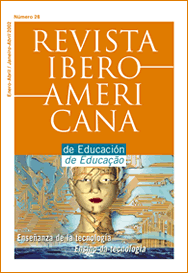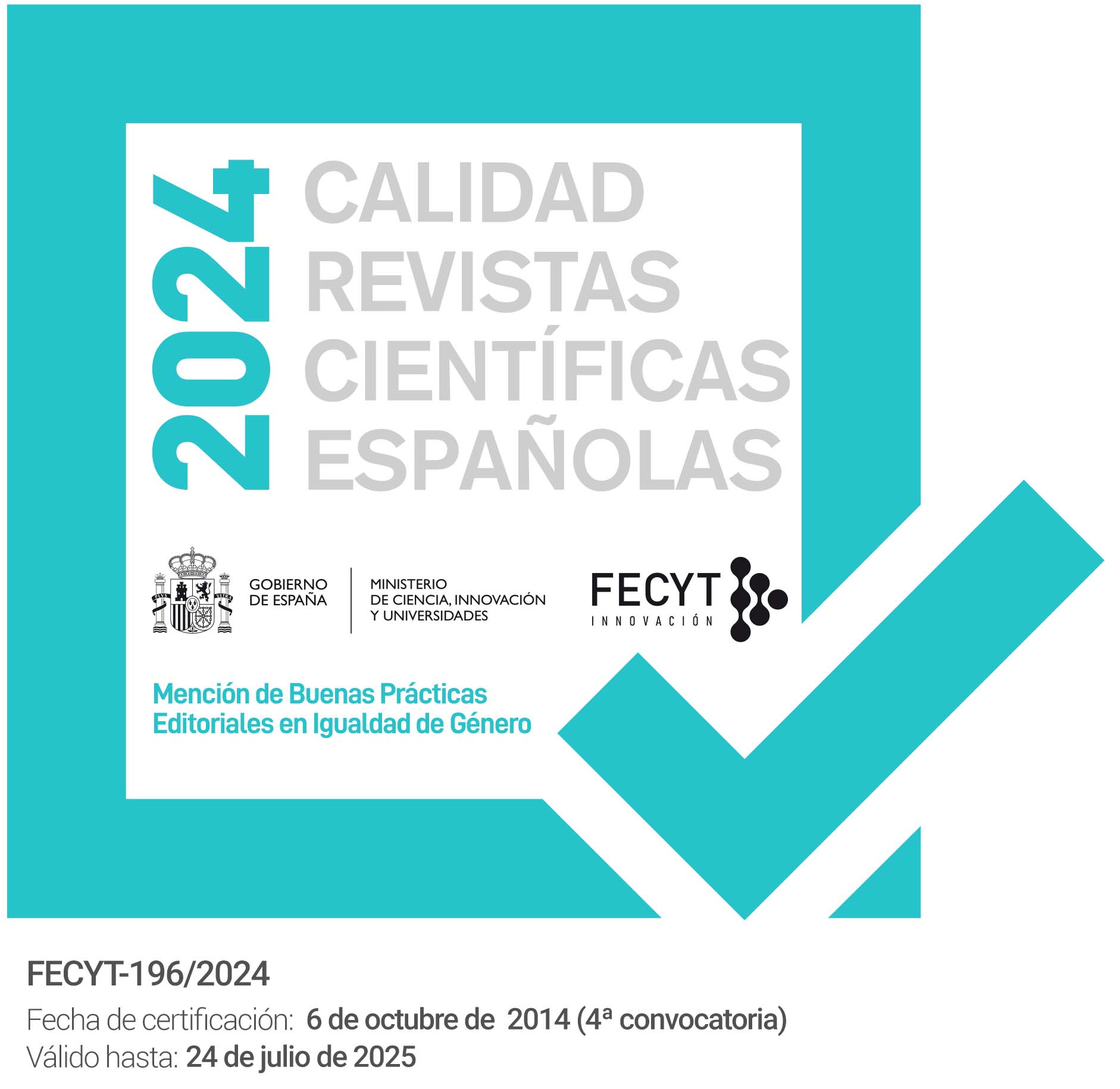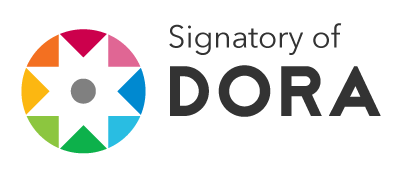Oportunidades regionales en la participación en estudios comparativos internacionales de evaluación educativa
DOI:
https://doi.org/10.35362/rie280963Resumo
Os estudos para avaliar a qualidade da educação têm experimentado, nos últimos anos, uma clara expansão. Isto se deve ao impulso de alguns organismos internacionais, como a Associação para a Avaliação dos Resultados Educativos (International Association for the Evaluation Achievement - IEA), a Organização para a Cooperação e o Desenvolvimento Econômico (OCDE) e, no âmbito latino-americano, o Órgão Regional de Educação para América Latina e o Caribe (OREALC-UNESCO).
Estas iniciativas respondem, sem dúvida, à mudança profunda ocorrida no último quarto do século passado, no qual o foco prioritário das políticas educativas deslocou-se da expansão dos sistemas para alcançar níveis adequados de cobertura à qualidade de processos de ensino-aprendizagem como mecanismo e garantia de resultados de acordo com as exigências das sociedades e dos mercados de trabalho.
Ibero-América e, em particular, os países latino-americanos têm sido os grandes ausentes na maioria desse tipo de investigações, excetuando as desenvolvidas pelo Laboratório Latino-americano de Avaliação da Qualidade da Educação em treze países da região.
No entanto, os possíveis benefícios resultantes dos estudos internacionais, que permitem comparar realidades educativas por meio de cortes transversais e sincrônicos, não têm tido oportunidade de se verificar na América Latina.
O presente trabalho, baseado num projeto promovido pelo Banco Interamericano de Desenvolvimento (BID), mostra, a partir da análise de cinco estudos internacionais e dos resultados que os mesmos oferecem para a elaboração de políticas educativas, as possibilidades, notificações metodológicas, condições e benefícios que a participação regional neste tipo de investigações pode ter para a melhoria da qualidade da educação na América Latina.
Downloads
Referências
ALKIN, M. C. (1990): «Curriculum evaluation models», en H. J. Walberg y G. D. Haertel (eds.): The International Encyclopedia of Educational Evaluation. Oxford, Pergamon.
ANDERSON, L. W. (1992.): «Observation in classrooms», en J. P. Keeves (ed.): Methodology and measurement in international educational surveys. La Haya, IEA.
ANDERSON, L. W.; RYAN, D. W., y SHAPIRO, B. J. (eds.) (1989): The IEA classroom environment study. Oxford, Pergamon.
BLOOM, B. S.; HASTINGS, J. T., y MADHAUS, G. F. (1971): Handbook of formative and summative evaluation of student learning. Nueva York, McGraw-Hill.
BREWER, K. R. W., y HANIF, M. (1983): Sampling with unequal probabilities. Nueva York, Springer Verlag.
DEGENHART, R. E. (ed.) (1990): Thirty years of international research. An annotated bibliography of IEA publications (1960-1990). La Haya, IEA.
FOY, P.; RUST, K., y SCHLEICHER, A. (1996): «Sample Design», en M. O. Martin y D. E. Kelly (eds.): TIMSS Technical Report, Volume 1. Boston, Center for the Study of Testing, Evaluation and Educational Policy, Boston College.
GOLDSTEIN, H. (1979): The design and analysis of longitudinal studies: their role in the measurement of change.
GOLDSTEIN, H., y THOMAS, S. (1995): «School effectiveness and “value-added” analysis», en: Forum, 37, 2, pp. 36-38.
GOLDSTEIN, H., y LEWIS, T. (eds.) (1996): Assessment: problems, developments and statistical issues. Nueva York, Wiley.
GOLDSTEIN, H.; HUIQI, P.; RATH, T., y HILL, N. (2000): The use of value added information in judging school performance. Londres, Institute of Education.
GÓMEZ, J. (1990): «Metodología de encuesta por muestreo», en J. Arnau, M. T. Anguera y J. Gómez: Metodología de la investigación en Ciencias del Comportamiento. Murcia, Universidad de Murcia.
HOWSON, G. (1995): Mathematics textbooks: a comparative study of grade 8 texts. Vancuver, Pacific Educational Press.
KEEVES, J. P. (1997): «Longitudinal research methods», en J. P. Keeves (ed.): Educational research, methodology, and measurement: an international handbook. Oxford, Pergamon.
KISH, L. (1995): Survey sampling. Nueva York, Wiley.
LABORATORIO LATINOAMERICANO DE EVALUACIÓN DE LA CALIDAD DE LA EDUCACIÓN (1998): Primer estudio internacional comparativo sobre Lenguaje, Matemáticas y factores asociados en tercero y cuarto grado. Santiago de Chile, OREALC-UNESCO.
— (2000): Primer estudio internacional comparativo sobre Lenguaje, Matemática y factores asociados para alumnos del tercero y cuarto grado de la educación
básica. Santiago de Chile, OREALC-UNESCO.
LEHMANN, R.; SCHULZ, W.; HUSFELDT, V., y SIBBERNS, H. (2001): IEA civic education study: technical report. Amsterdam, IEA.
LEVY, P. S., y LEMESHOW, S. (1999): Sampling of populations: methods and applications. Nueva York, Wiley.
LOHR, S. L. (2000): Muestreo: diseño y análisis. México, International Thompson.
LOXLEY, W. (1992): «Managing International Survey Research», en: Prospects, 23, 3, pp. 289-296.
MARTÍNEZ ARIAS, R. (1995): «El método de encuestas por muestreo: conceptos básicos», en M. T. Anguera, J. Arnau, M. Ato, R. Martínez Arias, J. Pascual y G. Vallejo: Métodos de investigación en Psicología. Madrid, Síntesis.
NCES (2000a): Higlights from theTIMSS Videotape Clasroom Study. Washington, National Center for Education Statistics.
— (2000b): Pursuing excellence: comparisons of international eighth-grade Mathematics and Science achievement from a U.S. perspective, 1995 and 1999.
Washington, National Center for Education Statistics.
NISBET, J. D. (1997): «Policy-oriented research», en J. P. Keeves (ed.): Educational research, methodology, and measurement: an international handbook. Oxford,
Pergamon.
OCDE/MEC (2000): PISA. La medida de los conocimientos y destrezas de los alumnos: un nuevo marco para la evaluación. Madrid, Ministerio de Educación y Cultura.
OCDE (1999): Measuring student knowledge and skills: a new framework for assessment. París, OCDE.
— (2000a): Measuring student knowledge and skills: the PISA 2000 assessment of Reading, Mathematical and Scientific Literacy. París, OCDE.
— (2000b): Call for tender for the international option of a longitudinal schoolwork transition survey as part of the OCDE/PISA 2003.CDE/DEELSA/SID/BPC(2000)5A.
París, OCDE.
— (2000c): The appraisal of investments in educational facilities. París, OCDE.
— (2001): Knowledge and skills for life. First results from PISA 2000. París, OCDE.
POSTLETHWAITE, T. N. (ed.) (1996): International encyclopedia of national systems of education, segunda edición. Oxford, Pergamon.
POSTLETHWAITE, T. N., y ROSS, K. N. (1992): Effective schools in Reading: implications for educational planners. La Haya, IEA.
ROJAS, A. J.; FERNÁNDEZ, J. S., y PÉREZ, C., (eds.) (1998): Investigar mediante encuestas: fundamentos teóricos y aspectos prácticos. Madrid, Síntesis.
ROSIER, M. J., y ROSS, K. W. (1992): «Sampling and administration», en J. P. Keeves (ed.): Methodology and measurement in international educational surveys. La Haya, IEA.
ROSS, K. N. (1991): Sampling manual for the IEA international study of Reading Literacy. Hamburgo, IEA.
RUST, K. (1994): «Issues in sampling for international comparative studies in education: the case of the IEA Reading Literacy study», en M. Binkley, K. Rust y M. Winglee (eds.): Methodological issues in comparative educational studies. Washington, U.S. Department of Education, Office for Educational Research and Improvement.
SANDERS, J. R. (1990a): «Curriculum Evaluation», en H. J. Walberg y G. D. Haertel (eds.): The International Encyclopedia of Educational Evaluation. Oxford, Pergamon.
— (1990 b): «Curriculum Evaluation Research», en H. J. Walberg y G. D. Haertel (eds.): The International Encyclopedia of Educational Evaluation. Oxford, Pergamon.
SCHMIDT, W. H.; JORDE, D.; COGAN, L. S.; BARRIER, E.; GONZALO, I.; MOSER, U.; SHIMIZU, K.; SAWADA, T.; VALVERDE, G.A.; MCKNIGHT, C.; PRAWAT, R. S.; WILEY, D. E.; RAIZEN, S. A.; BROTTON, E. D., y WOLFE, R. G. (1996): Characterizing pedagogical flow: an investigation of Mathematics and Science teaching in six countries. Dordrecht-Boston- Londres, Kluwer
Academic Publishers.
SCHMIDT, W. H.; MCKNIGHT, C. C.; VALVERDE, G. A.; HOUANG, R. T., y WILEY, D. E. (1996): Many visions, many aims: a cross-national investigation of curricular intentions in school Mathematics. Dordrecht-Boston-Londres, Kluwer Academic Publishers.
SCHMIDT, W. H.; RAIZEN, S. A.; BRITTON, E. D.; BIANCHI, L. J., y WOLFE, R. G. (1996):
Many visions, many aims: a cross-national investigation of curricular intentions in school science. Drodrecht-Boston-Londres, Kluwer Academic Publishers.
STALLINGS, J. A., y MOHLMAN, G. G. (1990): «Observation techniques», en H. J. Walberg y G. D. Haertel (eds.): The international encyclopedia of educational evaluation. Pergamon, Oxford.
STATISTICS CANADA CONSORTIUM (2000): A proposal submitted for the international option of a longitudinal school-work transition survey as part of the OECD/PISA 2003: Technical and Business Proposal. Ottawa, Statistics Canada.
STENHOUSE, L. (1990): «Case Study Methods», en H. J. Walberg y G. D. Haertel (eds.): The international encyclopedia of educational evaluation. Oxford, Pergamon.
STIGLER, J. W.; GONZALES, P.; KAWANAKA, T.; KNOLL, S., y SERRANO, A. (1999): The TIMSS videotape classroom study: methods and findings from an exploratory research project on eight-grade mathematics instruction in Germany, Japan and the United States. Washington, U.S. Department of Education, National Center for Education Statistics.
TIANA, A. (1998): «The evaluation of education systems: the view at the end of the 1990s. Introduction to the open file», en: Prospects, vol. XXVIII, n.º 1, pp. 23-29.
— (2000): Cooperación internacional en evaluación de la educación en América Latina y el Caribe. Análisis de la situación y propuestas de actuación. Washington, Banco Interamericano de Desarrollo–Departamento de Desarrollo Sostenible.
TORNEY-PURTA, J.; SCHWILLE, J., y AMADEO, J. (1999): Civic education across countries: twenty-four national case studies from the IEA Civic Education Project. Amsterdam, IEA.
TORNEY-PURTA, J.; LEHMAN, R.; OSWALD, H., y SCHULZ, W. (2001): Citizenship and education in twenty-eight countries: civic knowledge and engagement at age fourteen. Amsterdam, IEA.
TRIER, U. (1994): Establishing indicators for cross-curricular competencies in a comparative setting. Paper presented at the annual meeting of the American Educational Research Association, Nueva Orleans, 4-8 Abril.
WALBERG, H. J., y HAERTEL, G. D. (1990): «Curriculum Evaluation: Introduction», en H. J. Walberg y G. D. Haertel (eds.): The International Encyclopedia of Educational Evaluation. Oxford, Pergamon.
WILLIS, G. (1990): «Qualitative curriculum evaluation», en H. J. Walberg y G. D. Haertel (eds.): The International Encyclopedia of Educational Evaluation. Oxford, Pergamon.
WILLMS, J. D., y RAUDENBUSH, S. W. (1997): «Effective schools research», en J. P. Keeves (ed.): Educational research, methodology, and measurement: an international handbook. Oxford, Pergamon.
WILLMS, J. D., y SOMERS, M. A. (2001): Schooling outcomes in Latin America. Report. Canadian Research Institute for Social Policy, Universiad de Nueva Brunswick.
Como Citar
Publicado
Edição
Seção
Licença
Os(as) autores(as) que publiquem nesta revista concordam com os seguintes termos:















